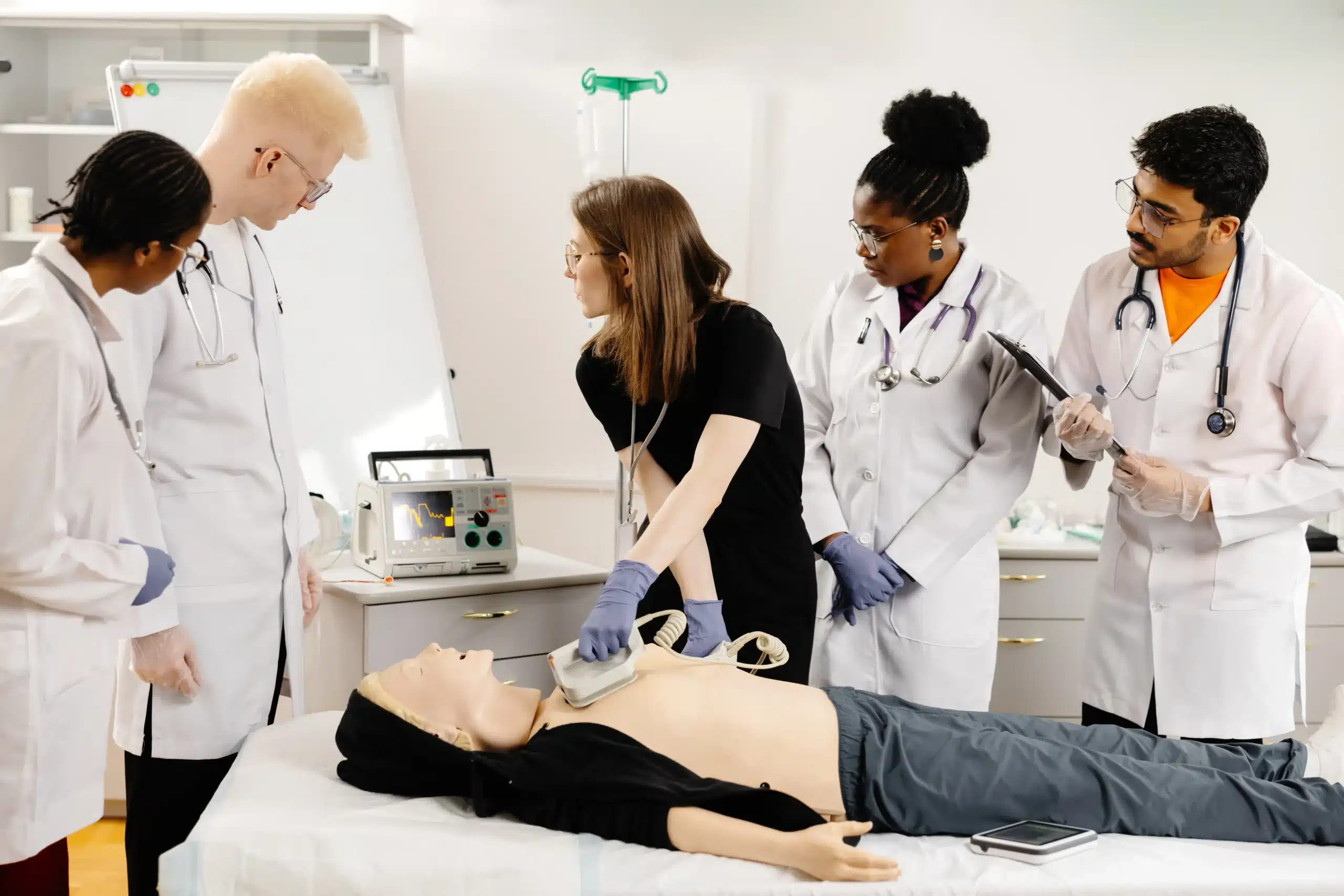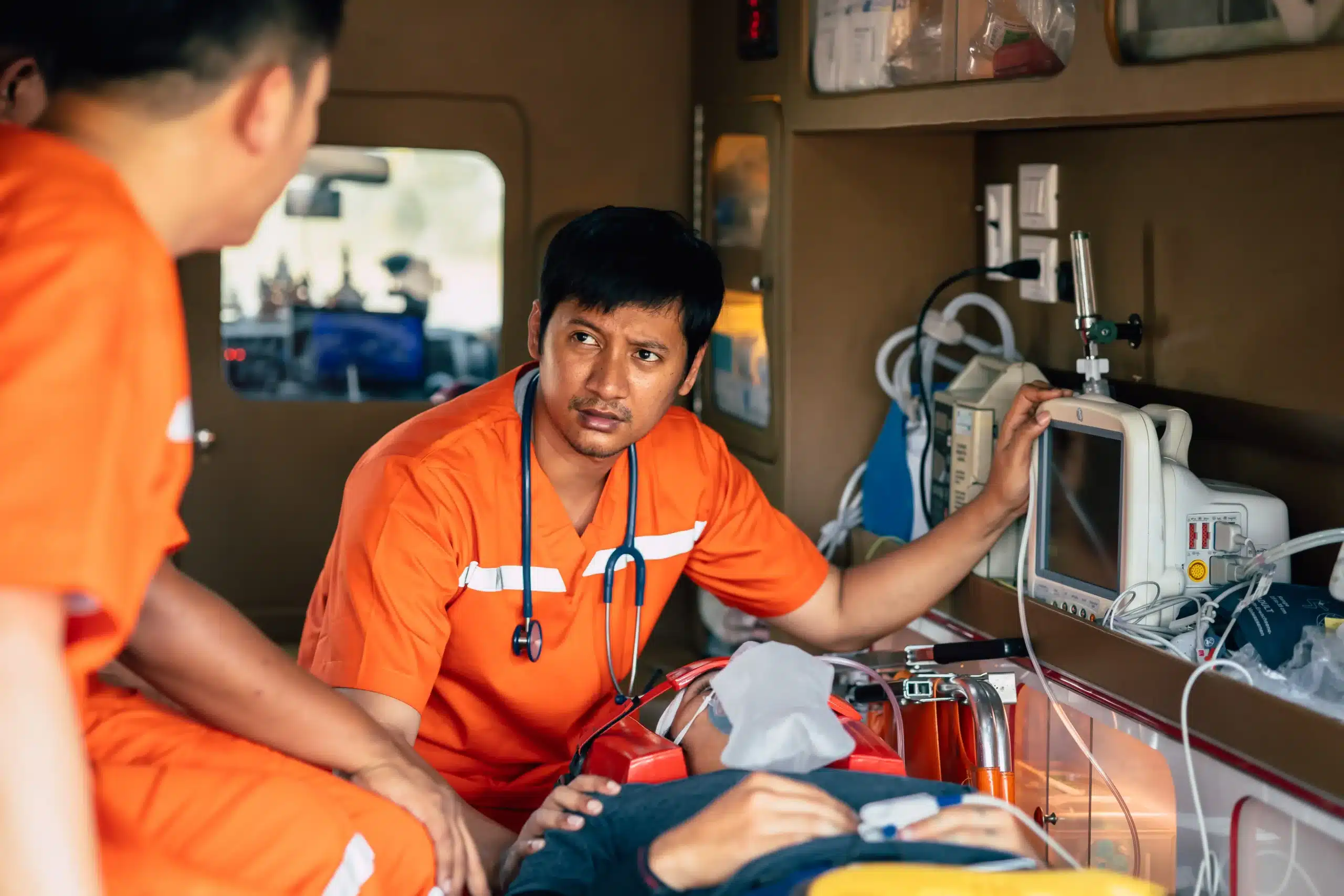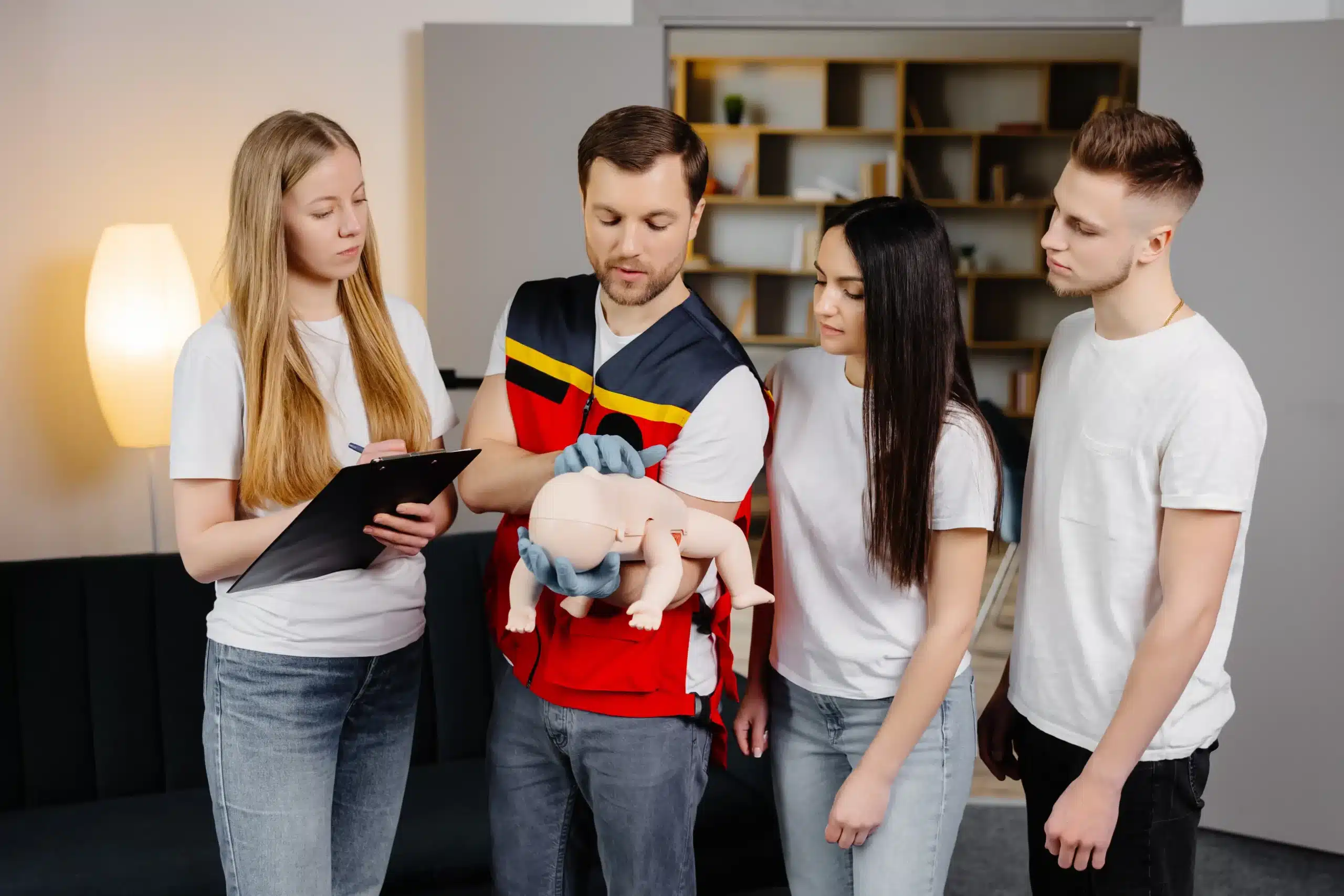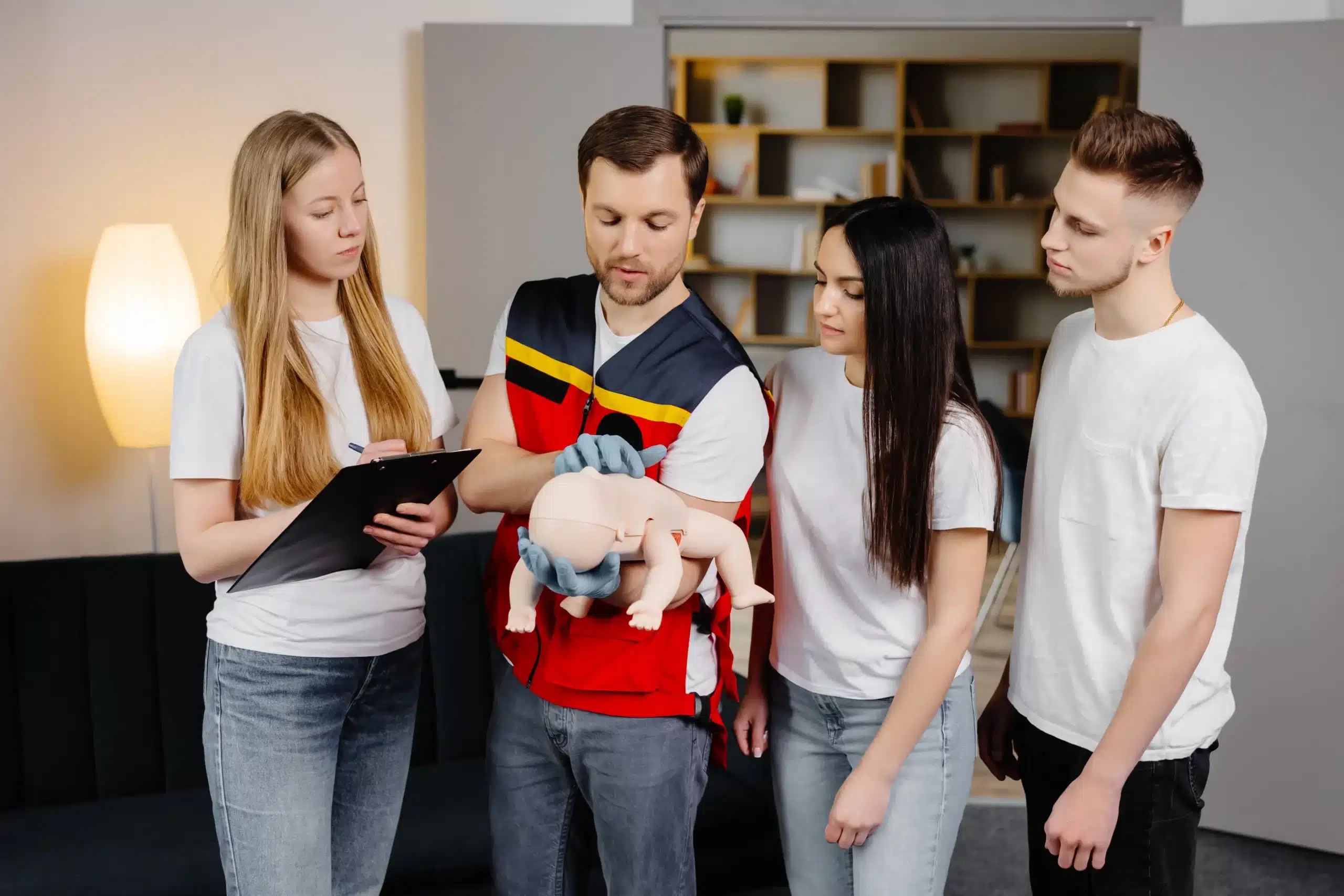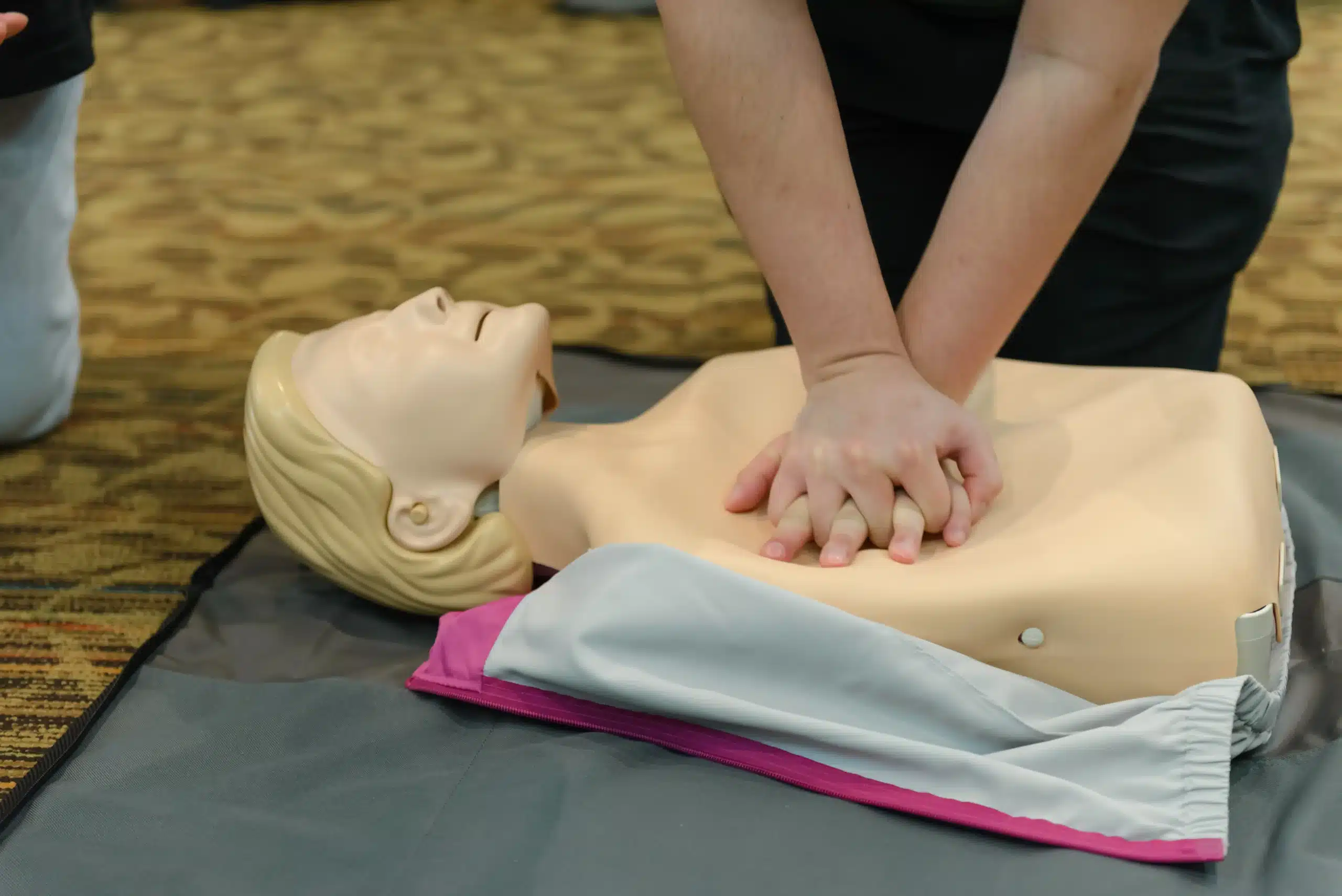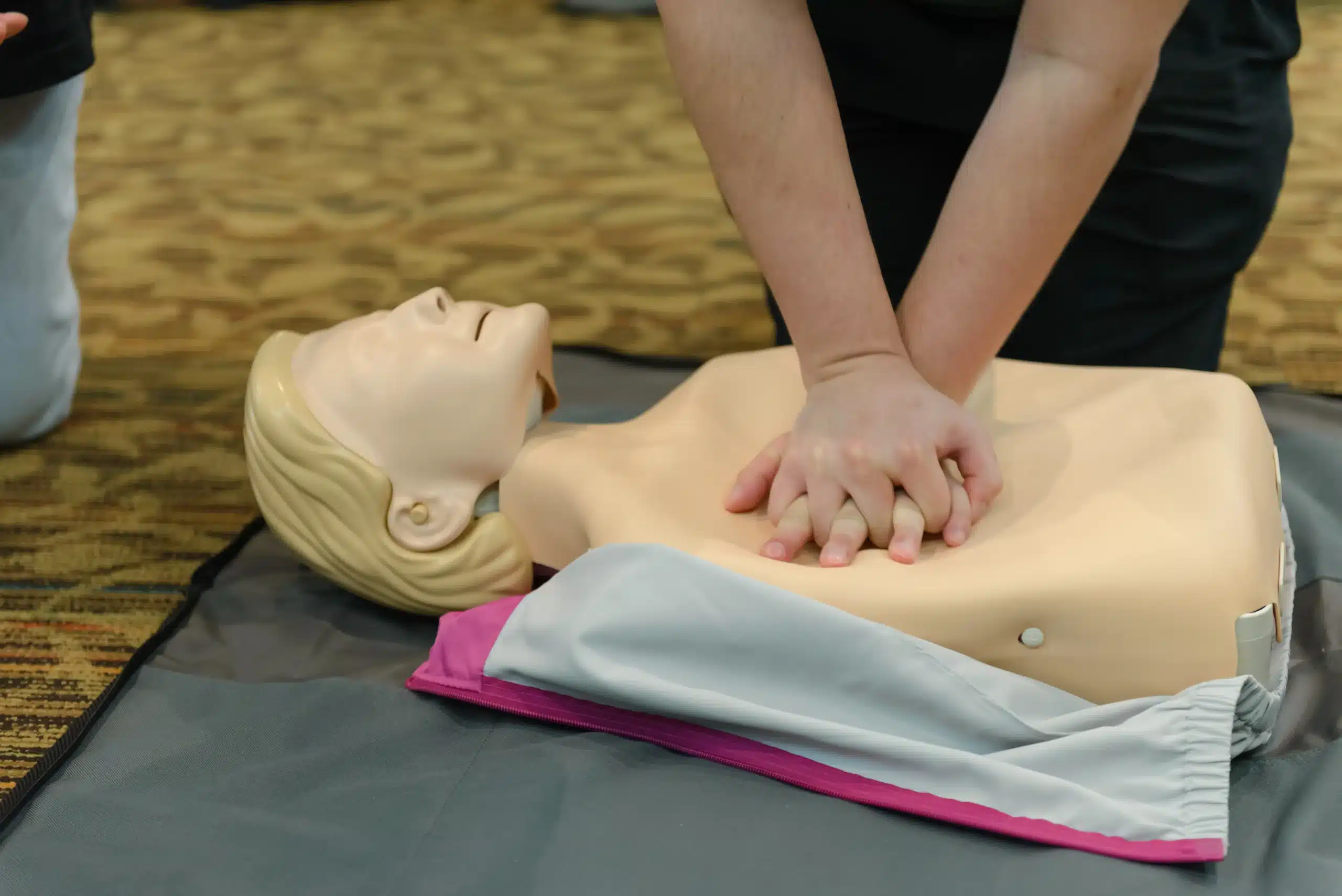Living in a vibrant city like San Francisco means being prepared for anything. While we hope emergencies never happen, knowing first-aid can transform you from a bystander into a potential lifesaver. This article provides a comprehensive overview of first-aid in San Francisco, including essential skills, training options, and resources tailored to the unique challenges of our urban environment. We’ll explore how first-aid training can empower you to respond effectively to everything from minor injuries to more serious medical situations, giving you the confidence and skills to make a real difference in your community.
Key Takeaways
- First aid is a powerful tool: Equipping yourself with first aid knowledge enables you to confidently handle a range of medical situations, from everyday mishaps to more serious emergencies. This empowers you to provide immediate care and potentially save lives.
- Choose a training program that meets your needs: Consider factors like cost, certification type, and the reputation of the training provider when selecting a first aid course. Look for reputable organizations like Safety Training Seminars, known for their comprehensive training and commitment to customer service.
- Maintain your skills for long-term effectiveness: First aid skills require upkeep. Regularly review your training materials, consider refresher courses, and explore community involvement opportunities to ensure you’re always prepared to respond effectively.
What is First Aid? And Why Does it Matter?
What is First Aid?
First aid is the immediate care you give someone who’s been injured or suddenly taken ill. It’s the bridge between the incident and professional medical help, and it can truly be lifesaving. Think of it as the initial support you provide until paramedics or other trained medical professionals arrive. This immediate care can range from cleaning and bandaging a minor cut to performing CPR. Learning these skills means you can make a real difference in an emergency. For reliable information on first aid training, check out the Red Cross First Aid resources.
Common First Aid Misconceptions
Unfortunately, there are quite a few misconceptions about first aid. For example, some people believe you should use a tourniquet for any bleeding, but that’s not true and could even cause harm. Another myth is that butter helps burns heal—it actually does the opposite by trapping heat and potentially increasing the damage. Clearing up these misunderstandings is key to ensuring people receive appropriate care. MyCPR NOW offers helpful information on debunking common first aid myths. It’s always best to learn first aid from a credible source to avoid relying on inaccurate information, so consider exploring resources from Mainland Safety.
How Can I Use First Aid in My Daily Life?
Knowing first aid isn’t just for medical professionals. These skills can be invaluable in everyday life. Imagine knowing how to help a choking child at a restaurant or treating a burn in your kitchen. First aid empowers you to respond effectively to a wide range of situations, from minor injuries at home to more serious incidents out in the community. CPR SF highlights how first aid training equips you to be the first line of defense. Taking a practical first aid class will give you the confidence and knowledge to handle these situations calmly and efficiently. You’ll learn essential skills like CPR, wound care, and how to respond to allergic reactions, making you a valuable resource in your community.
Best First Aid Training Providers in San Francisco
Finding the right first aid training can feel overwhelming, so I’ve put together a list of reputable providers in San Francisco. Whether you’re looking for a basic course or more advanced training, there’s an option for you.
Safety Training Seminars
Safety Training Seminars offers a comprehensive selection of American Heart Association (AHA) courses, including first aid. As a woman-owned business and an AHA Training Center, they maintain high standards for instruction. With classes offered daily across over 60 locations in Northern California, they make it easy to find a convenient time and place to get certified. Their San Francisco location serves residents of San Francisco, Daly City, San Mateo, and Oakland. You can find their course schedule and more information on their website.
American Red Cross
The American Red Cross is a well-known provider of first aid training, offering a range of courses and training options in San Francisco. Their variety of courses caters to different learning styles and schedules.
American Heart Association
While the American Heart Association doesn’t directly offer courses, they set the standards for high-quality CPR and first aid training. Authorized training centers, like Safety Training Seminars, provide AHA-certified courses, ensuring you learn the most up-to-date and evidence-based practices.
San Francisco Fire Department
The San Francisco Fire Department (SFFD) focuses on community safety, but they don’t directly provide CPR or first aid training to the public. For certified training, the SFFD recommends contacting organizations like the American Red Cross or an AHA Training Center such as Safety Training Seminars.
Neighborhood Emergency Response Team (NERT)
The Neighborhood Emergency Response Team (NERT) program is a great resource for free training options. As a community-based disaster preparedness initiative, NERT provides free CPR and first aid training to San Francisco residents, empowering individuals to assist their community during emergencies. Learn more on the SFFD website.
Essential First Aid Skills and Course Types
First aid courses equip you with practical skills to handle a range of medical situations. From everyday mishaps to more serious emergencies, having this knowledge can make a real difference. Let’s explore some key skills covered in a comprehensive first aid course:
CPR and AED Use
CPR (cardiopulmonary resuscitation) is a life-saving technique used when someone’s heart stops beating. You’ll learn how to perform chest compressions and rescue breaths, keeping blood and oxygen flowing until professional help arrives. Many courses also include training on how to use an AED (automated external defibrillator), a portable device that can shock the heart back into a normal rhythm. Safety Training Seminars offers American Heart Association CPR courses in San Francisco.
Wound Care and Bleeding Control
Knowing how to clean and dress a wound properly prevents infection and promotes healing. First aid training teaches you how to control bleeding with direct pressure and bandages—essential skills for handling cuts, scrapes, and more serious injuries.
Recognize and Respond to Allergic Reactions
Allergic reactions can range from mild skin irritation to life-threatening anaphylaxis. A good first aid course will cover how to identify the signs of a reaction—like hives, swelling, and difficulty breathing—and what steps to take, including administering epinephrine if necessary.
Manage Heat and Cold Emergencies
From heatstroke in the summer to hypothermia in the winter, San Francisco weather can pose certain risks. First aid training prepares you to recognize and manage these temperature-related emergencies, protecting yourself and others from potential harm.
Basic Assessment Skills
Before providing any first aid, it’s crucial to assess the situation quickly and safely. You’ll learn how to check for responsiveness, breathing, and circulation, gathering vital information to guide your actions and inform emergency responders. These basic assessment skills form the foundation of effective first aid.
Available Course Types
Several organizations offer first aid training in San Francisco, including the American Red Cross. You can find courses tailored to different needs and experience levels, from basic first aid and CPR to more advanced certifications like ACLS (Advanced Cardiovascular Life Support) and PALS (Pediatric Advanced Life Support) through Safety Training Seminars. Choosing the right course depends on your personal or professional requirements.
Choose the Right First Aid Course
Finding the right first aid course depends on several factors, from your specific needs to your budget. Let’s break down how to choose the best fit for you.
Factors to Consider When Choosing a Provider
A reputable provider is key. Look for recognized organizations like Safety Training Seminars, known for their comprehensive CPR and first aid training and commitment to customer service. Check if the provider offers the specific certifications you need (like CPR, BLS, or First Aid) and whether their curriculum aligns with industry standards. Reading reviews and testimonials can also give you a sense of other students’ experiences. Finally, consider the location and schedule – convenience matters!
Certification: Cost and Value
Think about the value you’re getting for the cost. While some providers might have lower upfront costs, they may not offer the same level of instruction or a nationally recognized certification. Safety Training Seminars offers a low price guarantee on their courses, ensuring you receive high-quality, affordable training. A recognized certification can make a difference in your job prospects or simply give you the confidence to handle emergencies effectively.
Online vs. In-Person Training
Choosing between online and in-person training often comes down to your learning style and availability. Online courses offer flexibility, allowing you to learn at your own pace. However, in-person training provides hands-on practice and direct interaction with instructors—essential for mastering practical skills. Some providers, like the American Red Cross, offer blended learning, combining online coursework with in-person skills sessions. This blended approach offers the benefits of both formats.
Free and Low-Cost Training
If cost is a major concern, explore free or low-cost training options. San Francisco offers several resources, such as the Neighborhood Emergency Response Team (NERT) program, which provides free CPR and First Aid training within their disaster preparedness course. The San Francisco Department of Public Health also supports community health initiatives, and you can check their site for potential training resources. Keep in mind that free programs may not offer the same range of certifications as paid courses. Weigh your options based on your individual needs and budget.
Get Certified in First Aid
So, you’re ready to get your first aid certification? Great! Knowing what to expect can make the whole process smoother. This section covers the ins and outs of first aid training and certification in San Francisco.
What Happens During Training?
First aid training equips you with the skills to handle a range of emergencies. You’ll learn how to assess a situation, make decisions under pressure, and provide immediate care until professional help arrives. Programs like the Red Cross First Aid program cover essential procedures for both adults and children. Expect a combination of interactive discussions, demonstrations, and hands-on practice. You’ll learn techniques for everything from treating minor cuts and burns to managing more serious injuries.
Certification Validity and Renewal
Most first aid certifications are valid for two years. This isn’t just a formality; regular renewal ensures your skills stay fresh. The Red Cross offers online refresher materials to help you keep your knowledge up-to-date. And if your certification is close to expiring, you can usually take a shorter renewal course to get recertified. Staying current with your training means you’ll be ready to respond confidently when it matters most.
Professional and Personal Benefits
Having first aid skills isn’t just about checking a box; it’s about being prepared to help in any situation. Whether you’re at home, at work, or out in the community, you’ll be equipped to provide assistance and potentially save a life. First aid training empowers you to respond effectively to medical emergencies, reducing suffering and promoting faster recovery. It also builds confidence and provides peace of mind, knowing you can handle unexpected situations.
Legal Considerations and Good Samaritan Laws
It’s natural to have questions about the legal aspects of providing first aid. Good Samaritan laws exist to protect those who choose to help in emergencies. These laws generally shield you from liability, provided you act in good faith and within the scope of your training. Understanding these laws and dispelling common misconceptions about first aid will give you the confidence to act quickly and decisively when needed. Knowing your rights and responsibilities ensures you can focus on providing the best possible care without unnecessary worry.
Keep Your First Aid Skills Sharp
Once you’ve earned your first aid certification, commit to keeping your skills fresh. Regular practice and continuing education will ensure you can confidently respond to emergencies when they matter most. There are several ways to stay on top of your first aid game in San Francisco.
Continuing Education and Refresher Courses
Even experienced first aiders benefit from occasional refreshers. The Red Cross recommends brushing up on your first aid skills at least once every three months. Free online refresher courses make it easy to fit into even the busiest schedules. These short courses cover essential skills and can help you stay current on any updated guidelines.
Community Involvement Opportunities
Want to give back to your community and maintain your first aid skills? The Neighborhood Emergency Response Team (NERT) program, offered through SF Fire, provides free CPR and first aid training as part of a larger disaster preparedness course. NERT empowers residents to help their neighbors during emergencies, making it a rewarding way to stay sharp and contribute to a more resilient San Francisco.
Prepare for San Francisco-Specific Emergencies
Knowing basic first aid is crucial anywhere, but understanding the specific challenges of an urban environment like San Francisco can make your skills even more effective. Most Americans live in urban areas, so preparing for urban emergency scenarios is essential. Think about the potential hazards you might encounter in a densely populated city—everything from traffic accidents to public transportation incidents. Emergencies are unpredictable, so being prepared to respond promptly can truly make a difference. Consider taking a specialized urban first aid course to learn how to handle situations unique to city life.
Related Articles
- Discover the Power of Workplace CPR & First-Aid Training
- Busting CPR Myths to Save Lives
- First-Aid Training in SF: Your Complete Guide – San Francisco CPR Classes
- CPR Classes in San Francisco: A Complete Guide – San Francisco CPR Classes
- Low-Cost CPR Training in Northern California: A Guide – San Francisco CPR Classes
Frequently Asked Questions
Why is first aid important if I’m not a medical professional?
Knowing first aid allows you to respond effectively to everyday injuries and potentially life-threatening situations before professional help arrives. It empowers you to take action, whether you’re dealing with a minor cut at home or witnessing a more serious incident in public. This immediate care can significantly impact someone’s recovery and even save lives.
What are some reliable resources for learning more about first aid?
Several reputable organizations offer comprehensive first aid training and resources. The American Red Cross and organizations like Safety Training Seminars, which provide American Heart Association-certified courses, are excellent places to start. You can also find helpful information online from sources like MyCPR NOW and Mainland Safety, which debunk common first aid myths.
How do I choose the right first aid course for me?
Consider your specific needs, budget, and learning style. Look for a reputable provider like Safety Training Seminars, offering certifications aligned with industry standards. Think about whether you prefer online or in-person training, and check for reviews and testimonials to gauge the quality of instruction. Also, compare costs and the value of the certification you’ll receive.
What if I can’t afford a paid first aid course?
Explore free or low-cost options available in San Francisco. The Neighborhood Emergency Response Team (NERT) program offers free CPR and first aid training as part of their disaster preparedness course. Check with the San Francisco Department of Public Health for potential community health initiatives that may include first aid training resources.
How can I keep my first aid skills current after getting certified?
Regular practice and continuing education are key. Take advantage of free online refresher courses, which cover essential skills and updates to guidelines. Consider joining community programs like NERT, which offer ongoing training and opportunities to use your skills while contributing to community resilience. Staying involved and informed ensures you’re always prepared to respond confidently in an emergency.


